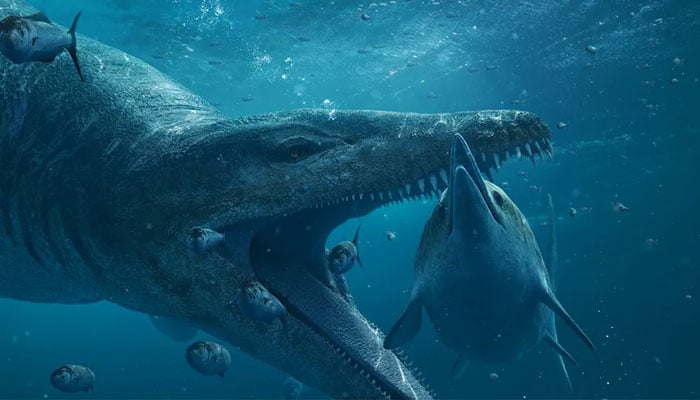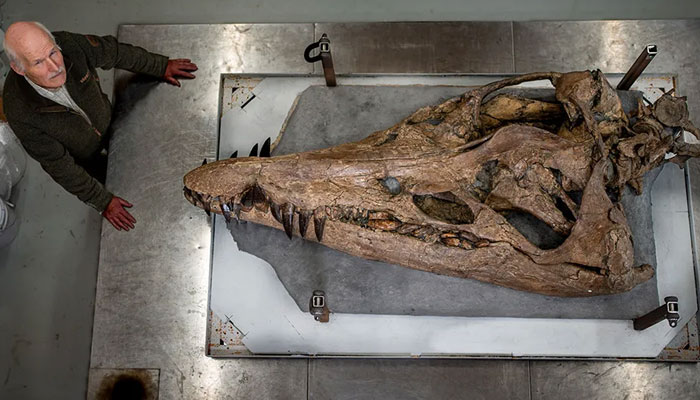Pliosaur, also referred to as “killer machine” by experts, was a sea reptile that had 130 razor-sharp teeth

Scientists in England recently unearthed a terrifying six-foot-long skull of an “underwater T-Rex” in Dorset cliffs, also known as the Jurassic Coast, after 150 million years.
The pliosaur, dubbed the “killer machine” by experts, was a sea reptile that had 130 teeth, including razor-sharp ridges, the US Sun reported.
Its six-foot-long head is one of the most complete examples discovered so far, and it could have been up to 12 metres long, as only the skull is bigger than the average human.
With its remarkable length and four powerful flipper-like limbs to propel itself at high speed, it was the apex predator in the ocean, the BBC reported.
Dr Andre Rowe from Bristol University said: “The animal would have been so massive that I think it would have been able to prey effectively on anything that was unfortunate enough to be in its space.
“I have no doubt that this was sort of like an underwater T Rex.”
The ancient predator is set to feature in a special episode of the beloved BBC show starring David Attenborough on New Year’s Day where the TV star will unveil the impressive fossil for the first time.
Palaeontologist Steve Etches claimed the dinosaur is the first of its kind.

While speaking to the BBC, Etches said: “It’s one of the best fossils I’ve ever worked on. What makes it unique is it’s complete. The lower jaw and the upper skull are meshed together, as they would be in life.
“Worldwide, there’s hardly any specimens ever found to that level of detail. And if they are, a lot of the bits are missing, whereas this, although it’s slightly distorted — it’s got every bone present.”
The gigantic skull was discovered 15 metres above Dorset beach by Etches and another scientist named Phil Jacobs.
They found a tip of the snout in a shingle and carried it using a makeshift stretcher due to its heavy weight. The rest of the animal is believed by scientists to be hiding inside the cliff.
Etches said: “I stake my life the rest of the animal is there. And it really should come out because it’s in a very rapidly eroding environment. This part of the cliff line is going back by feet a year. And it won’t be very long before the rest of the pliosaur drops out and gets lost.”
The skull will be on display next year at the Etches Collection Museum of Jurassic Marine Life in Kimmerbridge.

